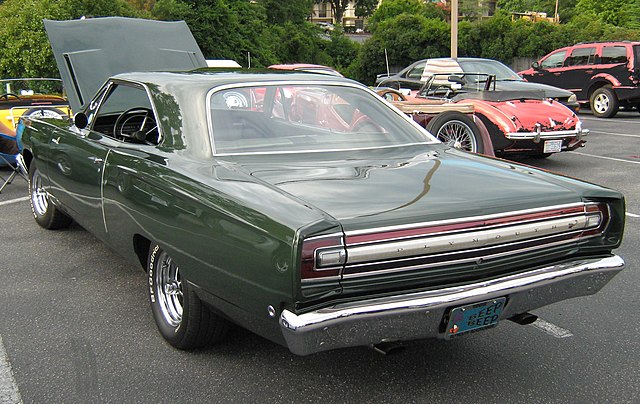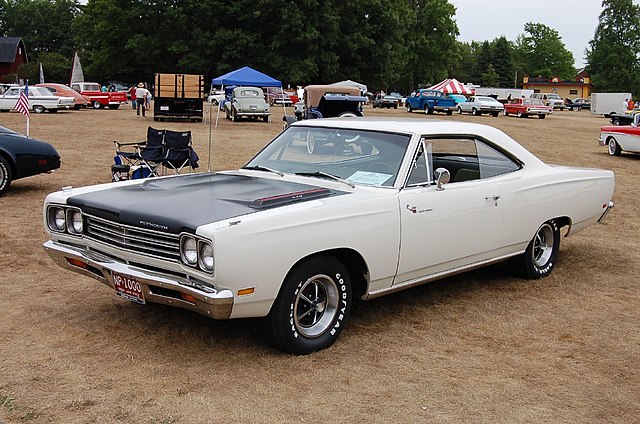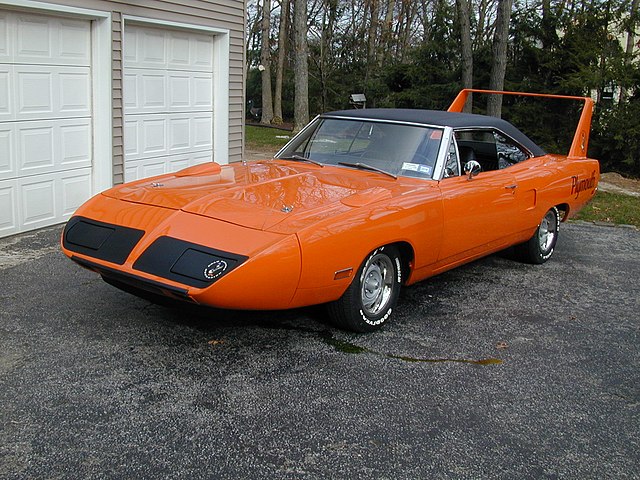
The Plymouth Road Runner first appeared on the American car market during the muscle car era, a period characterized by high-performance vehicles. This model, specifically designed to be both affordable and fast, became one of the most iconic muscle cars of its time.
Here we delve into the history, design, and legacy of the first generation Plymouth Road Runner, which spanned from 1968 to 1970.
Overview and Development

Origins of the Road Runner
The muscle car market in the late 1960s was booming, but many such vehicles were priced beyond the reach of younger enthusiasts. Plymouth, realizing the potential for a budget-friendly muscle car, decided to introduce the Road Runner. The car’s concept was based on simplicity and affordability without compromising on performance.
Design Philosophy
Plymouth aimed to create a no-frills muscle car. To keep costs down and performance up, they opted for a minimalist approach, eschewing luxury options and focusing on essential features that contributed to car performance.
Design and Features

Exterior Styling
The first generation Road Runner featured a basic, boxy body style typical of many late 60s muscle cars. It had a distinct, aggressive stance with minimal exterior decor. Unique to the Road Runner were its cartoon-inspired badges and decals, featuring the famous Warner Bros character from which it borrowed its name.
Interior Elements
The interior of the Road Runner was similarly Spartan. Basic vinyl bench seats, a simple dashboard, and minimal interior trim were standard. This bare-bones approach was a deliberate decision to keep the car affordable and straightforward.
Performance and Specifications
Under the hood, the Road Runner was anything but basic. The standard engine was a robust 383 cubic inch (6.3-liter) V8, capable of producing 335 horsepower. Buyers could also opt for the more powerful 426 Hemi or 440 V8 engines.
The Road Runner was renowned for its impressive acceleration and top-speed capabilities, making it a favorite among performance enthusiasts.
Model Year Changes

1968 Model Year
The 1968 Plymouth Road Runner debuted with a 4-speed manual transmission or an optional 3-speed automatic. It featured drum brakes all around, which were typical for the era but not optimal for the car’s power.
1969 Model Year
In 1969, the Road Runner received several significant updates. Externally, the grille and taillights were redesigned for a more aggressive look. Plymouth also introduced the ‘Air Grabber’ hood, which was an optional feature that included a switch-operated scoop that opened to allow more air into the engine, enhancing performance.
1970 Model Year
The 1970 model saw further refinements including a redesigned front end with a new grille and a more aerodynamically efficient shape. This year also introduced more comfort features, such as high-back bucket seats, as optional upgrades, moving slightly away from the car’s purely Spartan roots.
Special Editions and Variants

Road Runner Superbird
One of the most famous variants of the Road Runner was the 1970 Superbird, a highly modified version designed for NASCAR. The Superbird featured a more aerodynamic body, a massive rear wing, and a distinctive protruding nose, making it one of the most recognizable and exotic muscle cars ever produced.
Convertible Models
Although not as common as the coupe, Plymouth did offer a convertible option in 1969 and 1970. These models are particularly rare today and are highly sought after by collectors.
Market Impact and Legacy
Performance Impact
The Road Runner made a significant mark on the muscle car scene with its blend of affordability and performance. It was a commercial success, prompting competitors to offer similar models that balanced cost and power.
Cultural Impact
The Road Runner has been a part of American pop culture since its introduction. It has appeared in numerous movies, TV shows, and other media, often symbolizing the rebellious spirit of the 1960s and 1970s American car culture.
Collector’s Item
Today, the first generation Road Runner is a coveted collector’s item, particularly models equipped with the Hemi engines. Its combination of performance, unique styling, and historical significance keeps it popular among classic car enthusiasts.
Challenges in Restoring a Classic Road Runner
Restoring a first-generation Plymouth Road Runner presents unique challenges. Due to its age, finding original or high-quality reproduction parts can be difficult and expensive. Rust is a common issue, particularly in models that were driven in harsh climates and not properly stored.
Additionally, ensuring the authenticity of parts, especially for the high-performance variants like the 426 Hemi, is crucial for maintaining the car’s value.
Sourcing Parts
The most sought-after parts for restoration are original factory components that match the car’s original specifications. These include engine blocks, transmissions, and specific trim pieces unique to the Road Runner. Enthusiasts often turn to specialty suppliers, classic car swap meets, and online forums to track down the needed parts.
Engine and Mechanical Overhaul
A significant aspect of any Road Runner restoration is the engine rebuild. For the Road Runner, maintaining or enhancing the engine’s performance is often a priority.
This might involve machining original engine components, upgrading to more durable modern alternatives, or employing period-correct modifications that were typical among enthusiasts of the era.
Bodywork and Paint
Restoring the bodywork of a Plymouth Road Runner involves meticulous attention to detail. This process typically includes stripping the original paint, repairing any body damage or rust, and applying a new coat of paint that matches the original factory colors. Authenticity is key, so using the correct paint codes and techniques to replicate the original look is essential.
Interior Restoration
The interior of the Road Runner, while simpler than more luxurious vehicles of its time, still requires careful restoration, especially to meet the standards of high-level car shows.
This includes refurbishing or replacing the vinyl seats, carpeting, and dashboard components. For true authenticity, sourcing OEM (original equipment manufacturer) parts, or high-quality replicas is necessary to maintain the vintage look.
Maintaining Roadworthiness
Beyond cosmetic restoration, ensuring that the Road Runner is mechanically sound and safe to drive is paramount. This includes overhauling the braking system, suspension, and other critical components.
Many owners upgrade these systems to improve safety and performance while trying to keep the modifications subtle enough to maintain the car’s classic character.
Conclusion
The Plymouth Road Runner remains a symbol of a bygone era of muscle car dominance. Its introduction as a budget-friendly, performance-oriented vehicle changed the landscape of the American automotive market.
The first generation Road Runner, with its raw power and minimalist design, embodies the essence of the muscle car era and continues to be celebrated in the collector car community today.
